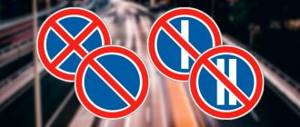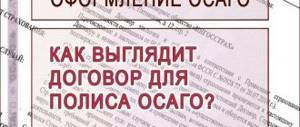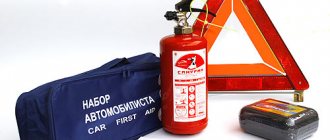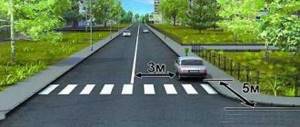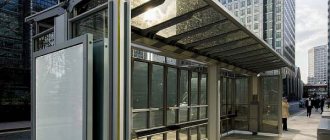Stopping and parking at a bus stop (all on the shelves)
According to paragraph 12.4 of the traffic rules, stopping is prohibited closer than 15 meters from the stopping places for minibuses or parking for passenger taxis, indicated by marking 1.17, and in its absence - from the sign of the stopping place for minibuses or parking for passenger taxis (except for stops for boarding and disembarking passengers, if this does not interfere with the movement of route vehicles or vehicles used as passenger taxis).
First, let's remember what stopping and parking are. Thus, according to the Russian Federation Traffic Regulations, “Stopping” is the deliberate cessation of the movement of a vehicle for a period of more than 5 minutes for reasons not related to the embarkation or disembarkation of passengers or the loading or unloading of a vehicle. “Stopping” is a deliberate cessation of the movement of a vehicle for up to 5 minutes, as well as for longer if this is necessary for boarding or disembarking passengers or loading or unloading the vehicle.
Fine for stopping at a bus stop
Parking or stopping a vehicle at a stop that resulted in the creation of an obstacle to public transport, as well as stopping in a tunnel, with the exception of the cases described in part 6 of this article, entails a fine of 2,000 rubles .
First of all, we note that it is possible to stop in such places, following paragraph of traffic rules 12.4, but only in case of a stop to disembark or board passengers into a vehicle , and this should not interfere with taxis and minibuses. In other cases, stopping is strictly prohibited.
Replacement for minibuses
Photo: TASS/Emil Matveev, portal of the mayor and government of Moscow
Surely everyone still remembers the minibuses that roamed the city streets a few years ago. For some passengers, the trip became an extreme adventure: the drivers loved to drive around and even managed to count out change while driving. Plus, minibuses only accepted cash for travel and did not transport beneficiaries for free. Everything changed in 2021, when 211 private bus routes in the capital switched to a single fare standard.
The new blue buses of various capacities are valid for any city tickets and social cards. There are air conditioners, video surveillance, as well as electronic boards with the names of stops and voice notifications for passengers. They also offer free Wi-Fi. Bus drivers are strictly prohibited from smoking inside the bus, being rude to passengers and stopping in unauthorized places.
Stopping at a bus stop - who is allowed
The traffic rules state that stopping at bus, trolleybus stops and minibus stops is prohibited. This applies to both the “pocket” for bus stops and the entire zone 15 meters long before the pocket, and 15 meters after. Prohibited areas are marked with signs and road markings familiar to every motorist.
A fine can be issued not only during a personal meeting with the inspector, but also if the offense was filmed by stationary recording devices (photo or video). If the offender agrees with the fine, 60 days are given to pay. The countdown of the period begins from the moment of delivery of a copy of the decision on the offense.
Driving past a bus stop
Question: I’m driving through an intersection when the traffic light is green in the second lane. There is a public transport stop behind the intersection. I need to pass the stop.
The trolleybus starts moving from the stop in the first lane, and immediately changes lanes to the second lane, which is where I am traveling. I had to slow down suddenly. If we collided, who would be to blame? And which vehicles leaving a stop must give way?
Let's start the answer with the second part of the question.
Clause 18.3 of the traffic rules requires the following: “In populated areas, drivers must give way to trolleybuses and buses starting from the designated stopping place. Drivers of trolleybuses and buses can start moving only after making sure that they are given way.”
Thus, when a trolleybus or bus leaves a designated stop, priority is on their side. Route vehicles in the specified conditions, i.e. when leaving a stop, they have priority right to move first. Under these conditions, other drivers must give way to them, even when route vehicles move immediately into the second and further lanes.
The question involuntarily arises: what is the “start of movement from a stop”, and at what place on the road does this “start of movement” end? There are no specifics in the traffic regulations on this matter, but it is always visible visually when a route vehicle starts moving, i.e. starts moving, plus the left turn indicator is on.
The length of the stop is indicated by marking 1.17 or “+ -” 15 meters from the installed sign 5.16 “Bus and (or) trolleybus stopping place.” It is still prohibited to stop the vehicle in this place in accordance with paragraph 12.4 of the traffic rules.
If any other vehicle, for example a car, or even a taxi, is leaving the stop, then the Rules do NOT oblige you to give way to them. This is the answer to the second part of the question. You can read more in the article Priority of public transport.
Then the trolleybus pulled away from the stop and immediately made another maneuver - it changed lanes into the adjacent (second) lane, and in such a way that it cut off the person driving behind. Was there any violation on his part in this case?
Here we need to understand in more detail, because the word “immediately” is not very clear. Immediately - when? - immediately from the stop or immediately as soon as you left the stop? You need to look on the spot.
There would be a violation only if the trolleybus changed lanes after leaving the stop. Since, in accordance with paragraph 8.4, when changing lanes, the driver of a trolleybus (bus) is obliged to give way to a vehicle moving in the same direction without changing the direction of his movement. In the event of an accident in this situation, the main culprit will be the one who changes lanes.
The trolleybus driver drove away from the stop - no one stopped him from doing this. And from the moment he left the stop, his priority ends. If he drives away from the stop immediately into the second lane, then there is no violation, and in this case other participants are obliged to give way to him.
But the fairness of the analysis of the above situation takes place in, so to speak, general cases, i.e. when the violation is obvious. In any case, the specifics of the development of each situation in relation to a given location of the event are important. Any accident must be considered in relation to the location.
And yet, the question of determining who is guilty arises when? – when the collision has already taken place! It took place for some reason, including violations, inattention, failure to comply with certain safe traffic conditions on this particular section of the road, and other reasons.
It is clear that these are general phrases, but in each accident they are specific. And among them there are reasons for which you can officially “present”, for example, a violation of traffic rules, and there are other reasons, for example, skidding on a slippery road. In other words, the driver didn’t mean to, but it happened that way. Therefore, critical situations should be prevented, i.e. try to avoid collisions.
Let's return to our topic: driving past a public transport stop. When a route vehicle leaves a stop, you need to remember the following:
Public transport runs on schedule. Drivers of route vehicles have the right to deviate from the requirements of traffic direction signs in lanes 5.15.1 and 5.15.2, mandatory signs 4.1.1-4.1.6, and some prohibitory signs. Therefore, the direction of the minibus in certain situations may seem very unexpected.
The route line can run in a very inconvenient way, often involving a large number of lane changes for left turns followed by stops, and stopping points, in turn, are located on the right side of the road.
A public transport stop can be located in a well-equipped “pocket”, or it can be located on the edge of the road, on the first lane. This feature must also be taken into account when driving around a bus or trolleybus standing at a stop.
And one last thing. When approaching a stop where a route vehicle is parked, it is usually clear whether it has just arrived, has been standing for some time, or is about to leave. And it is almost always possible to get your bearings in advance, i.e. either take a left turn, if there is room, or slow down and let the minibus drive away from the stop, as required by paragraph 18.3.
Be careful while driving.
Parking concept
It’s a little easier here than with pedestrian crossings. So, the driver needs to leave the car near the bus stop. Here the distance to the stop and after it is the same - 15 meters. But you need to correctly calculate where to leave the car. So, if there is only a sign indicating that there is a bus stop, then you need to count the meters from it, no matter whether the car is located in front of the sign or behind it.
First, let's look at the situation with parking a car on a one-way road. The driver approaches a pedestrian crossing and needs to park next to it. If he decides to leave the car before crossing, then the car must be at least 5 meters in front of the nearest edge of the zebra crossing.
Also read: Business in a small town with small investments
Section 12 of traffic rules: stopping and parking
Let us note only one important circumstance: the presence of both signs and markings is an incomparable benefit for the driver. And all because they are a very clear way to regulate stopping and parking, and the car owner can see with his own eyes the correctness (or, unfortunately, incorrectness) of his actions.
The ban on parking on this section of the road is due to the high speed of traffic outside the populated area. Especially if the traffic is on the main road. In such conditions, a vehicle standing on the roadway will be a clear obstacle. And if a short stop here is allowed, then parking using the roadway is excluded by the Rules for reasons of basic safety.
Is it possible to turn off a modern turbo engine immediately after stopping?
There is a rule among car enthusiasts: “a turbocharged engine cannot be turned off immediately after stopping; you need to give the turbine time to cool down.” What is this connected with? Let's look at it from a technical point of view.
The turbine uses the pressure of the exhaust gases, which spins the impeller of the so-called hot part (the part is called hot because the exhaust gases are hot, absurd, but simple).
The impeller of the hot part is connected to the impeller in the cold part, which has another task - to create excess pressure at the engine inlet and this is the cold part.
The higher the intake pressure, the more air will enter the cylinders, and therefore more oxygen. To put it simply, it’s like blowing on smoldering coals; they will start to flare up and release more energy.
During operation, the turbine can heat up to 800 degrees, which is why the air it pumps into the intake also passes through the “intercooler” cooling circuit.
In order for the mechanism to operate at this temperature, it must be lubricated = cooled; oil is supplied to the turbine cartridge, which lubricates and cools the rotor and its components.
Stopping and parking at bus stops: rules, fines, nuances
Unfortunately, many drivers of passenger vehicles forget about the prohibition of stopping and parking in these places, creating additional obstacles and increasing the danger of the area. And while some do this consciously, some drivers are simply not aware of the rules that apply to bus stops.
But a fine is not the only punishment provided for the violator. If the driver parks at a stop and leaves the car, the car will be towed to the impound lot. In this case, you will have to pay significantly more. At the same time, you may only be gone for a few minutes - the traffic police and tow trucks work quickly - 10 minutes is enough to detain a car.
What to do if the inspector does not come to you for a long time after stopping
You can’t just pick up and leave, as not very competent authors of various publications often advise. In this case, liability under Part 2 of Art. 12.25 of the Code of Administrative Offenses of the Russian Federation for failure to comply with the requirement to stop the car. And it doesn’t matter that you stopped, waited for the policeman and moved on - the court in such a situation and without evidence of a delay will be 100% on the side of the police.
Therefore, adhere to the following procedure:
- Immediately after stopping, turn the recorder towards the driver's window;
- Comment on the situation out loud - time is such and such, stopped. I'm waiting for so much - it's not suitable.
- You can take a video of what the inspector is doing.
- After waiting 10 minutes, call the traffic police hotline and report your exact location and situation.
- Let them know that you cannot wait any longer and, having notified them, are leaving the stopping place.
You may be advised to still wait for the inspector, so it is better to be prepared to invite the operator to wait with you. After another couple of minutes you can move on.
In general, this list of mandatory actions is sufficient to avoid liability under Art. 12.25 Code of Administrative Offenses of the Russian Federation.
Often, by the way, the police do not even react to a car that has driven away if they are very busy processing other drivers. Subconsciously, they understand that if the driver stopped, honestly waited for some time and only then moved on, then with a high degree of probability everything is in order. And few people want to leave their post for the sake of a 500-ruble fine.
Well, one more thing - if it is not important for you to comply with all the formalities, then you can get out of the car yourself. But you don't have to, remember this.
Parking rules: where you can and cannot park
It should be recognized that the rules for parking in courtyards and adjacent areas have not yet been clearly defined at the legislative level. But it would be worth it, because, for example, Moscow courtyards are increasingly reminiscent of a zone of high voltage that arises between residents. However, there is a set of general rules that any driver must follow.
In general, the parking issue is very popular for Russia, because sometimes driving a car is not much cheaper than parking it. But seriously, parking a car at first glance seems like a piece of cake, but everything is a little more complicated. Firstly, vehicle parking is clearly regulated by the Traffic Rules. Secondly, different cities and regions may have their own parking nuances. And thirdly, there are unspoken rules, not to comply with which means not to respect yourself, nor fellow motorists, nor pedestrians, nor law enforcement officers, nor even that cat who is used to basking in the place under which the heating main is laid.
Parking in front and behind the pedestrian crossing
When parking after crossing, you can not pay attention to the distance to the markings if you parked on the right side of the road or the traffic is one-way. If you have chosen the left lane on a two-lane road with oncoming and passing traffic, then you should drive through the crossing and stop the car 5 or more meters from it.
- On rails intended for trams, as well as near them;
- At railway crossings, bridges, tunnels, overpasses, etc.;
- At the zebra crossing and closer than 5 meters in front of it;
- Less than 15 meters from a public transport stop. It can be indicated either by markings or by a sign. The exception is the embarkation and disembarkation of people;
- On a road with dangerous turns or heavy traffic;
- In a lane reserved for cyclists;
- If your car interferes with other road users. For example, it will interfere with pedestrians, obscure road signs or traffic signals from other motorists, etc.;
- At an intersection and closer than 5 meters from the edge of the roadway (the one you are crossing);
- If the distance between your car and the solid line demarcating the lanes (if any) is less than 3 meters.
Also read: List of free medications for disabled people for 2020 official website
Is it possible to park after a public transport stop?
- you need to remember that you can stop if there is no interference, but if it lasts more than 5 minutes, imposing a fine will be legal. The protocol or resolution may also arrive by mail if the violation is recorded by surveillance cameras;
- If a citizen agrees with the sanctions, then he has 2 months to pay. They are counted after 10 days after the offender receives the order. During this period he pays 50% of it. If the deadline is missed, the violator faces increased sanctions, up to and including mandatory labor;
- You can check whether there are fines for parking and others on the website of the State Traffic Inspectorate;
- If you disagree with the protocol or resolution, you can appeal it. The citizen has 10 days to do this after they are issued. In fact, this period is counted from the date of receipt of copies of these documents (you need to save the envelopes or put the date of receipt upon delivery);
- if the specified period is missed for a good reason (business trip, hospital, circumstances beyond the will of the citizen, failure to receive copies of documents), then you can apply for its restoration;
- Administrative fines are appealed in accordance with Art. 30.2 Code of Administrative Offences.
There are two types of administrative sanctions for violation: a fine for stopping at a public transport stop and towing the car. If it interferes with traffic and the driver is not nearby. Towing and impound parking services are at the driver’s expense.
The mechanic told how long you need to wait before turning off the engine after stopping
All drivers know well that the engine is the main part of the car. This is expressed not only in its tasks, but also in its cost. Repairing or replacing an engine can cost six figures, so the operation and maintenance of the unit must be approached wisely. There have long been debates on the Internet about how to properly turn off the power unit. Some drivers do this immediately after stopping, others let it idle for a while. I figured out which approach was the most correct, and a mechanic friend I knew helped me with this.
Will the article be useful? Don't forget to give a "thumbs up"
and
subscribe to the channel
!
It turned out that it is not always worth turning off the engine immediately after stopping.
. Even this simple and banal procedure has its own nuances that careful car owners should be aware of. There are several cases when it is recommended to wait a little and then turn off the power unit. Let's talk about them in more detail.
When talking about this topic, the mechanic immediately told me about simple turbocharged engines. During active operation, the turbine gets quite hot
. Turning off the engine entails stopping the circulation of coolant, which negatively affects the condition of the hot unit. Some cars have a system that allows the pump to continue running for 1-2 minutes after the power unit has been turned off. You can hear it well even from outside.
Many car owners install turbo timers on their cars. The device works in a similar way - the driver turns off the engine, but it continues to run for a short time until the turbine cools down. If none of the above options is available, then it is recommended to wait at least a minute after stopping
. Thanks to this approach, an expensive turbine will last much longer. This is especially true for those who like to “fry” in their car.
Another typical case is the operation of the engine cooling fan.
. If after stopping we hear how it functions, there is no point in turning off the power unit. It is better to give a few seconds for the coolant to cool and circulate through the system. On many cars, the fan continues to run when the engine is turned off, however, antifreeze does not circulate. In the long term, such driver actions will increase the resource of the power unit.
Source
Where stopping and parking is prohibited
In this article we will again talk about the concepts of stopping and parking, but they will be considered from a different angle. More specifically, places where stopping and parking of vehicles is prohibited , as well as fines for illegal stopping and parking.
It is prohibited to stop a vehicle if it obscures traffic lights or road signs. This requirement applies to a greater extent to trucks, however, in some cases, a passenger car can also obscure road signs (for example, temporary ones) from other road users.
20 Jul 2021 stopurist 1630
Share this post
- Related Posts
- Limitation period for writing off accounts receivable
- Compensation for Health Harm to UIS Employees
- Is vacation pay paid when going on maternity leave?
- Who is eligible for the capital repair benefit?
